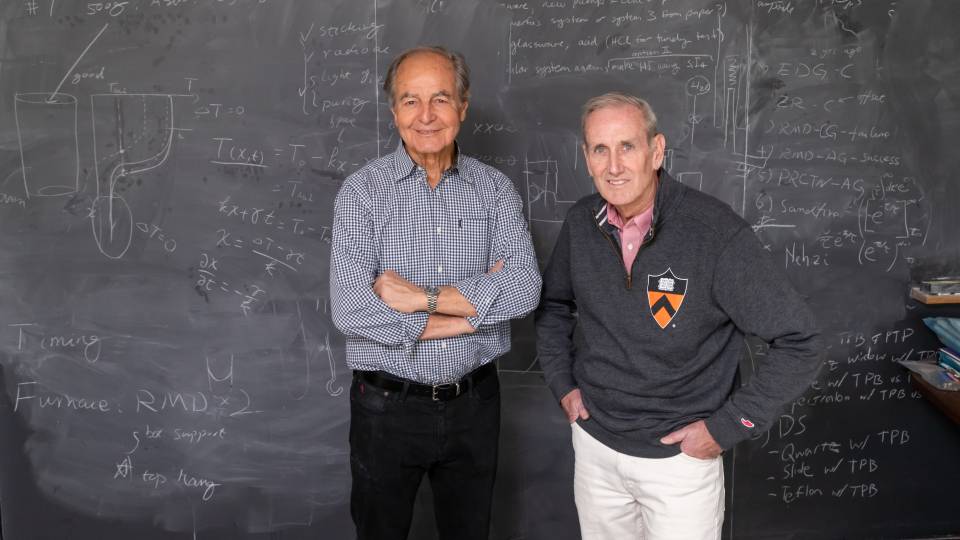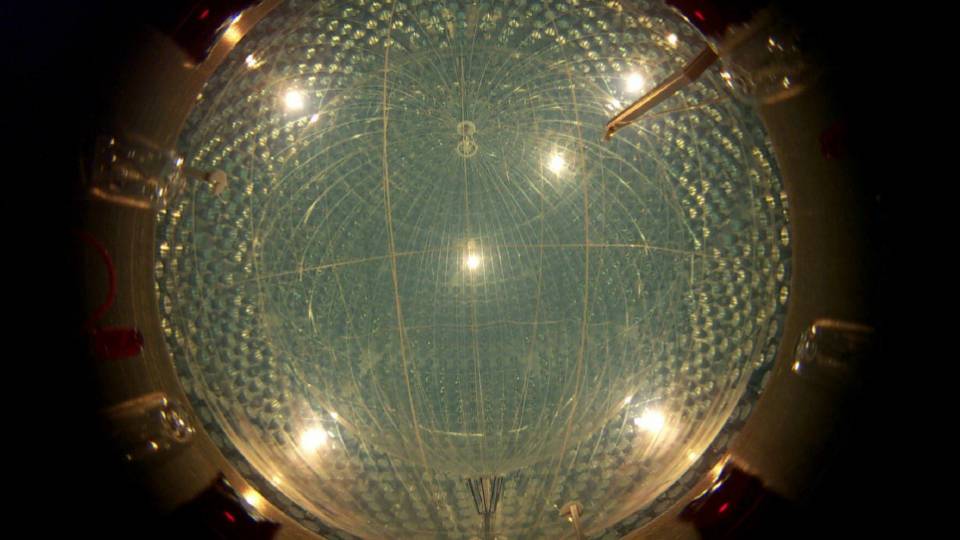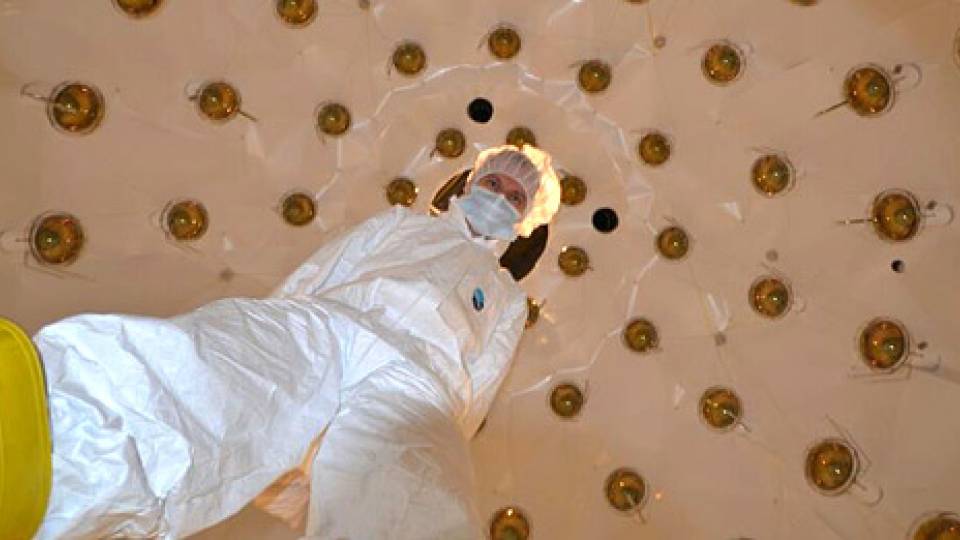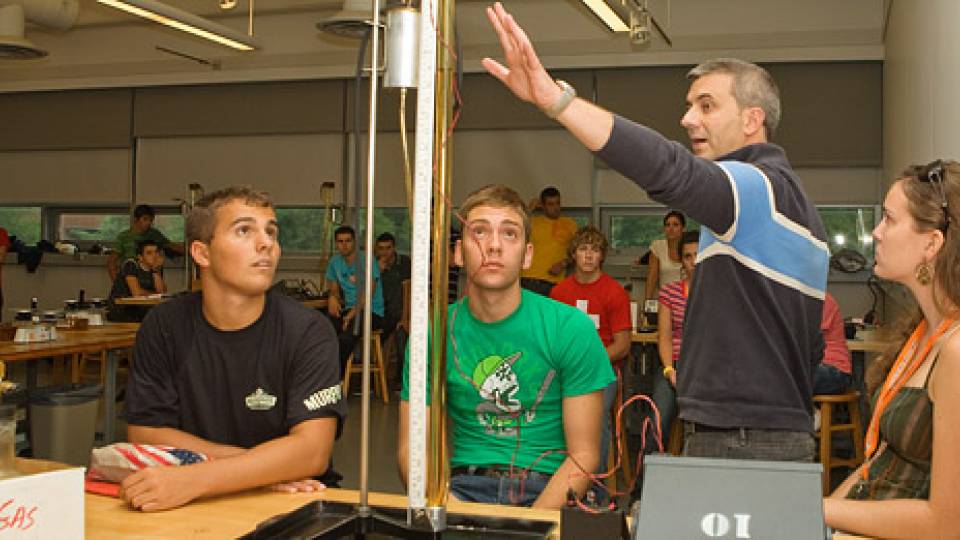Scientists are a step closer to understanding sunshine. A monumental experiment buried deep beneath the mountains of Italy has provided Princeton physicists with a clearer understanding of the sun's heart -- and of a mysterious class of subatomic particles born there.
The researchers, working as part of an international collaboration at the underground Gran Sasso National Laboratory near L'Aquila, Italy, have made the first real-time observation of low-energy solar neutrinos, which are fundamental particles created by nuclear reactions that stream in vast numbers from the sun's core.
"Our observations essentially confirm that we understand how the sun shines," said Frank Calaprice, a professor of physics and principal investigator of the Princeton team. "Physicists have had theories regarding the nuclear reactions within the sun for years, but direct observations have remained elusive. Now we understand these reactions much better."
The scientists' precise measurements of the neutrinos' energy provide long-sought proof of the theory regarding how these neutrinos are produced.
In stars the size of the sun, most solar energy is produced by a complex chain of nuclear reactions that converts hydrogen into helium. Beginning with protons from hydrogen's nucleus, the chain takes one of several routes that all end with the creation of a helium nucleus and the production of sunlight.
Steps along two of these routes require the presence of the element beryllium, and physicists have theorized that these steps are responsible for creating about 10 percent of the sun's neutrinos. But technological limitations had made the theory difficult to test until now.
The Gran Sasso lab's giant Borexino detector, located more than a kilometer below the Earth's surface, overcame these limitations, permitting the team to observe low-energy neutrinos, which interact extremely rarely with other forms of matter. Scientists have desired a way to detect them, because they emerge largely unchanged from their journey through the sun's interior to the Earth -- offering an unsullied glimpse into the processes that forged them. Most particles that emerge from the sun take so long to escape the interior that they change drastically before scientists can study them, so it has been difficult to prove how the sun creates energy. Neutrinos provide a key because they escape before they have time to change.
"The findings show that science's understanding of the chain of nuclear processes that make the sun shine is essentially correct, as least as far as the part of the chain that involves beryllium is concerned," Calaprice said. "The reaction does not generate a large percentage of the sun's energy, but confirming that we understand it makes us more certain that we know how the other processes that create sunlight work."
The results address other longstanding questions as well. The highly sensitive detector has confirmed theories regarding why previous experiments had found fewer solar neutrinos than expected at higher energies, a problem that stemmed from the particles' odd capacity to oscillate from one form to another as they travel through space. While the sun only produces electron neutrinos, these can change into tau or muon neutrinos, which have proved more difficult to detect.
Observing lower-energy neutrinos may also help physicists understand other predicted effects of neutrino oscillation that have not yet been tested.
"This experiment is an important step along the way toward understanding the details of neutrino physics using neutrinos from the sun," said physicist Morgan Wascko, co-spokesman for SciBooNE neutrino experiment at Fermi National Accelerator Laboratory. "Using these particles to observe the sun is important because they give us a lot of information about the way the universe functions, because it's full of stars."
The Borexino experiment's entire research team, which includes more than 100 scientists from many institutions worldwide, will publish its findings in an upcoming edition of the scientific journal Physics Letters B. Calaprice's Princeton colleagues include Cristiano Galbiati, assistant professor of physics, and Jay Benziger, professor of chemical engineering.
The experiment is funded by the National Science Foundation.
Abstract:
First real time detection of 7Be solar neutrinos by Borexino
This paper reports a direct measurement of the 7Be solar neutrino signal rate performed with the Borexino low background liquid scintillator detector. This is the first real-time spectral measurement of sub-MeV solar neutrinos. The result for 0.862 MeV 7Be is 47 ± 7stat ± 12sys counts/(day · 100 ton), consistent with predictions of Standard Solar Models and neutrino oscillations with LMA-MSW parameters.



